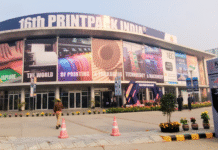India underwent a strict lockdown in the second quarter of 2020 due to the spread of Covid-19 pandemic. The economic revival in metropolitan cities has been considerably slow. Reverse migration during the lockdown had many people relocating back to their hometowns. Post lockdown being eased, non-metros have displayed higher resilience than the metros.
To discuss the festive demand pacing up the economic activities further in non-
metros, Dainik Bhaskar and exchange4media hosted a webinar on ‘Non-metros: Buoyant with festive demand.’
Vikram Sakhuja, Group chief executive officer, Madison Media, and OOH, shared some eye-opening statistics, “Two thirds of India’s population lives in the rural and non-metros (the Bharat areas). 53% of household consumption expenditure comes from there. Rural contribution is 50-67% of FMCGs category, 60% of fans, 50-51% of two-wheelers, 33% of white goods including smartphones, and 15-20% of cars.”
There has been a sharp increase in literacy levels and double-income families in rural areas, which has contributed to the growth of tier-II and tier-III cities. Naval Ahuja, co-founder, e4m, adds, “The GST collection growth for India was at 4% nationwide, the growth for non-metros was at 10%, showing better revival and rebound in these markets. The bountiful monsoon and good harvests are also driving this growth in smaller towns.”
Newspaper Advertising pushing up sales in Bharat
Newspaper consumption was severely hit in the metros while the situation was not that bad in non-metros as circulation came back much faster there. According to the speakers, vernacular newspapers have seen an 85-90% bounce back.

Two lucrative aspects of the print medium are its immediacy and credibility. Girish Agarwal, promoter-director, Dainik Bhaskar Group, says, “The newspaper business is 100% response-driven. You don’t do brand-building advertising in print.”
Vivek B Srivatsa, head-Marketing for Passenger Vehicle Business Unit (PVBU), Tata Motors expresses his view on print advertising, “The auto industry is driven by visibility on the media and on the new products that we launch. We have daily trackers and elaborate data about which publication works for which region for which day.
“Tata Motors was the first to go on media post the pandemic. We were on
newspapers June onwards and that has helped us have a much stronger
steam behind our recovery.”
The fear factor has been comparatively less in Bharat areas. The markets opened up much faster, people are going shopping, and there is a large amount of economic activity. Satyajit Sengupta, CCSMO – Sales & Marketing, Dainik Bhaskar group shares his opinion, “In the last 4-5 months, we have got some excellent case studies on the response that newspapers have shown. We have taken these numbers to the advertisers, and it has helped us tremendously.”
“A more tailormade approach for each product and each market would be the way to go ahead. Agency-client-media triangle has to work a lot more efficiently to make the right decisions,” Srivatsa adds.
Covid-19 as a catalyst for growth
The driving consumption in large categories like FMCG, eCommerce, and auto has visibly spiked in tier-II and tier-III cities. “We are seeing a dramatic increase in first-time buyers due to fear of travel in public transport. Personal transport has come out to be the number one priority,” says Srivatsa.
Phakey remarks, “Rural has grown almost twice as fast as urban in the FMCG
category. Within Dabur categories, healthcare has grown the fastest. eCommerce has grown at a very fast rate and made inroads into the smaller towns. It has grown five times for us and become a significant part of our journey. There is a growth of 3 to 4 times on our digital spends. Because we are able to communicate with the rural consumer, Dabur products have got huge amount of savings because of this medium. We have seen traction for new products coming from smaller town classes.”
“In the next six months to one year, we will see an explosion in the retail
infrastructure in the non-metros. The appetite for risk of the financial agencies will gradually expand in the smaller towns, and that will be influenced by the improved economy in the smaller towns,” Srivatsa predicts.
















